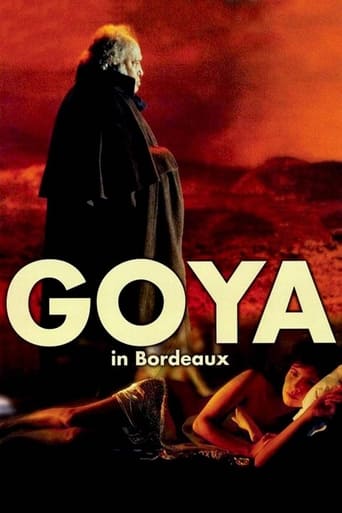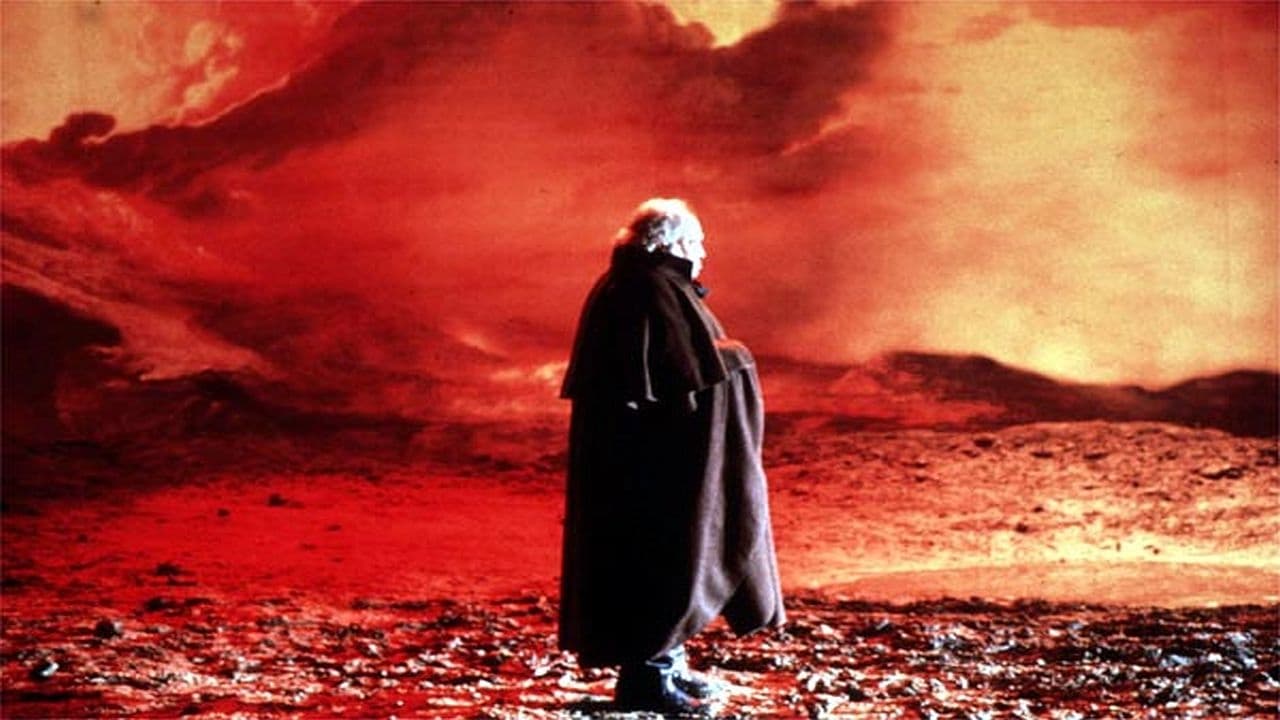webmaster-49
Using obvious soundstages, totally unconvincing actors, and dialogue straight out of the "follow your dreams" playbook of tired clichés, the director manages to reduce the fascinating life of one of Spain's greatest painters to absolute tedium. Perhaps its fitting that it is titled "Goya in Bordeaux" as it certainly captures the flavor of the artist's dull last years spent there, essentially dying. For myself, I'm waiting for someone to make "Goya in Madrid" which will, hopefully, depict the dizzying rise of a provincial Aragonese teenager to the coveted title of Court Painter.Maybe the guy who did that Mozart film will have a go at it.RstJ
Hilldoc
The review completely ignores some very good performances in this film. Francisco Rabal was terrific and also notable were the Duchess of Alba and the young girl. I enjoyed some of the musical pieces as well. All in all there's a lot more than cinematography to this and it's definitely worth a look.
Alice Liddel
The patterning motif of 'Goya in Bordeaux' is the spiral, which Goya claims is like life. So this is not the linear historical biography of the artist we have come to expect from Hollywood, moving inexorably from birth, through success and failure, to death. In its circular motion, its conflating time, history, imagination, art, fantasy and dream, the film 'Goya' most resembles is Ruiz's astonishing Proust adaptation, 'Time Regained'.
Here the story progresses through the labyrinth of an artist's mind, where the narrative proceeds from a chance memory or incident rather than chronological order. History is monumental, written in stone, immovable - 'Goya', on the other hand, emphasises, fluidity, instability and fragility - the status of any particular scene is always in doubt, such is the complex nature of Saura's narration. The film appears to begins with a dream - an old man wakes up in a foreign land; he does not know where he is, he walks down strange streets, bewildered by the foreign language and customs, having wandered down the obligatary white corridor, before catching a vision of an old, dead love. The next scene, where a lover and friend bemoan his tendency in his illness to peregrinate, suggests that it wasn't a dream.
This ambiguity continues throughout. After all, the narrative concerns a dying man, whose life flashes before him, memories flooding back of critical biographical moments in the artist's life - his work at Court; his affair with the Duchess of Alba; his exile in France for liberal sympathies - but these are never merely historical, but revealing of Goya's aesthetic as it developed, theoretically and in practice. The biographical emphasis seems justified in that this development is linked to increasing misanthropy, terror, fear of madness and senility. One of his fears is of being in unrestrained imagination, and some of his later, horrifyingly dark works are a far cry from the dutiful Court pictures, even if these burst with a barely contained passion. Goya's development - from patronage to exiled self-expression - marks a crucial development in Western art towards the Romantic, the solipsistic. Goya lived in times of tyranny, barbarity, slaughter, revolution but history is always filtered through his lurid sensibility, as if with Goya came the pessimistic idea that there is no such thing as objective reality.
Saura borrows many devices from Ruiz - the shifting mise-en-scene that flows through time and space, including the aging artist in a dark room watching a gloriously sunny aristocratic garden party decades earlier; or the device of the artists' various selves existing in the same frame. This sense of a personal history as opposed to a chronological one is emphasised in the flimsiness of the mise-en-scene, a literal creation of light and screens.
Comparing Saura to Ruiz, however, is like comparing Arnold Bennett to Virginia Woolf. Saura is simply too heavy-handed to achieve the temporal fleet-footedness necessary. His ideas are frequently literal or banal, his need to transpose everything as dance climaxes in a massacre ballet of obscene bathos. Whereas Ruiz sublimely caught the Proustian rush, Saura cannot hope to reach the visual disturbance and energy of Goya, and contents himself with defacing his work (blood spilling from paintings, etc.) Where Proust's end was a beginning (the decision to write the book he was actually finishing), Saura weighs himself down with portentousness; where Proust's ideas were grounded in a compelling plot of war and social comedy, Saura gets lost in ever-decreasing circles. I'm sure there's a resonant comparison being made between Goya and Saura himself, especially in the speech of regret preceding the massacre - both men liberals serving totalitarian regimes. Again, as with 'Tango', the film's main interest is its exquisite score.
alexguardiet
The episode of life of the Spanish painter Goya portrayed in this film is told through dreamlike anti-realistic settings and colours. One falls under the impression that the film belongs more to cinematographer Vittorio Storaro than to the actual director of the film, but that happens very often with this colour-crazy Italian (remember the Bernardo Bertolucci films). The last films of Fassbinder also spring into mind at times, especially when colour is achieved through projection of coloured light (instead of the objects themselves containing colour), which is understandable in the case of the German director, since he started off in theatre, but less so in Saura's case. And at certain moments the theatrical techniques used are stretched too far into the world of theatre, seeming to forget that what we are supposed to be watching is cinema and not a videotaped play, as in the use of a wall that at times is opaque and at other times becomes transparent. But all in all the film is a pleasure to watch, especially if you appreciate good photography.


 AD
AD


